This is an introduction of the potential for future transportation systems that combine robotics, mobility, and aviation technologies from among the wide range of technologies that Kawasaki is involved in, and utilize equipment such as VTOL drones and delivery robots which are currently under new development.

Labor shortages in logistics
The declining birth rate and aging population in Japan mean that an insufficient working population is becoming a serious social issue. In one estimate, it is predicted that in 2030, there will be 64.29 million people supplying labor against a labor demand of 70.73 million people. It is considered that there will be a labor shortage of 6.44 million people (Source: “Future estimates of the labor market 2030” by Persol Research and Consulting and Chuo University).
In the area of logistics too, the average age of workers in the logistics industry is increasing each year, while the number of home deliveries has expanded rapidly in recent years due to the spread of online shopping. It is expected that there will be a labor shortage in the future. In addition, the long working hours of delivery workers is considered a problem and there is a vicious circle where there are not enough workers, but the amount of work is increasing, so the working environment worsens. It is expected that this will get even worse from now on.
What is Near-Future Mobility?
We will create new values by combining the conventional mobility, including transportation of people and vehicles and transportation systems, with the technologies of Kawasaki such as unmanned operations, high road-handling abilities and robot arms. This is Kawasaki’s idea of Near-Future Mobility. In addition to the unmanned operation of logistics that has previously been performed by human hand, in the future, we also want to incorporate things such as the aviation technology that Kawasaki has strengths in, to improve productivity through higher logistics efficiency in terms of distance, volume and time.
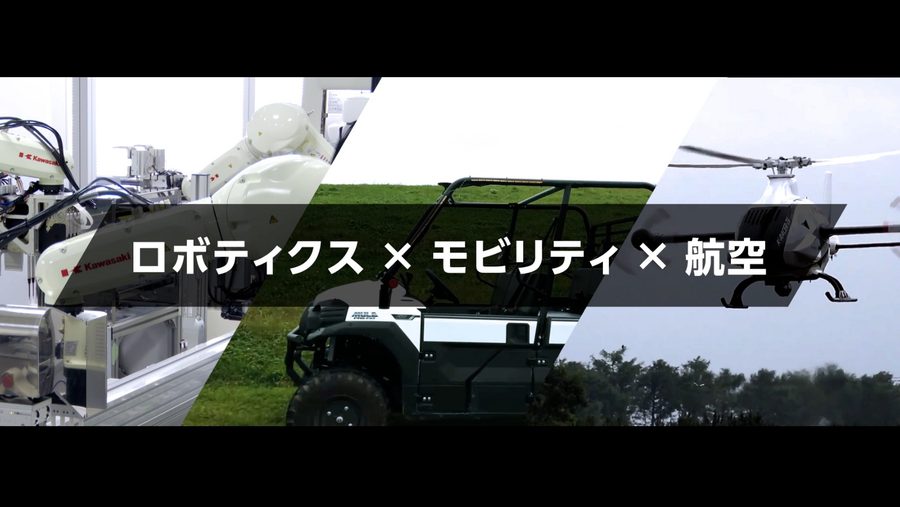
Unmanned VTOL aircraft and delivery robots to realize solution concepts for the last one mile
One aspect of the world that Kawasaki is attempting to realize with Near-Future Mobility is the automation of the last one mile* through unmanned goods transportation using unmanned VTOL (Vertical Take-Off and Landing aircraft) and delivery robots.
*Last one mile … The final point of contact in the delivery of products from the delivery origin to the delivery destination

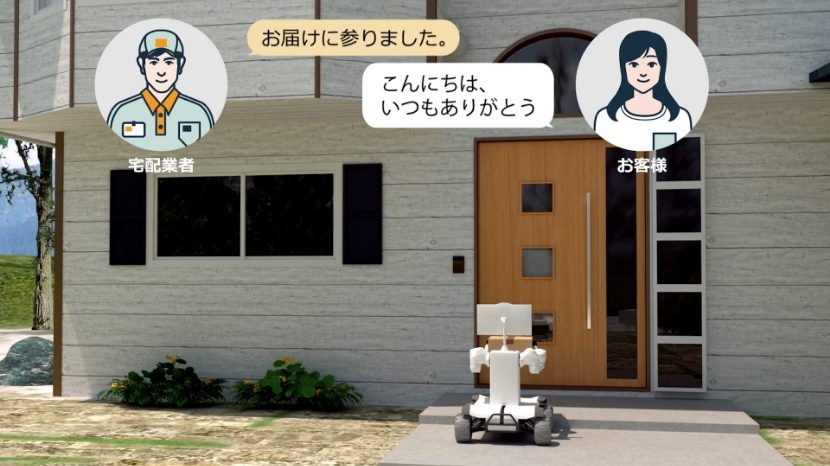
Unmanned VTOL aircraft overview

Unmanned VTOL aircraft: K-RACER-X1
Drive system: Reciprocating engine (Ninja H2R supercharged engine)
Flight method: Vertical take-off and landing
Control method: Automated flight
Max. payload: 100 kg
The K-RACER was originally developed with the assumption of use for transportation in mountainous areas. It is a solution that combines the Kawasaki helicopter technology with a compact high-power engine developed for motorcycles. It has already reached a maximum payload of 100 kg and development is progressing with the target of reaching 200 kg in the future.
The K-RACER can transport the cargo from the delivery origin of the cargo to a location close to the delivery destination, without needing to go via a relay location. It is not affected by the traffic congestion that occurs in large cities and at the time of natural disasters. It realizes accurate deliveries on time. K-RACER can also be used for deliveries in large delivery areas where a long distance must be moved, such as delivery from a city area to a regional area.
Delivery robot outline
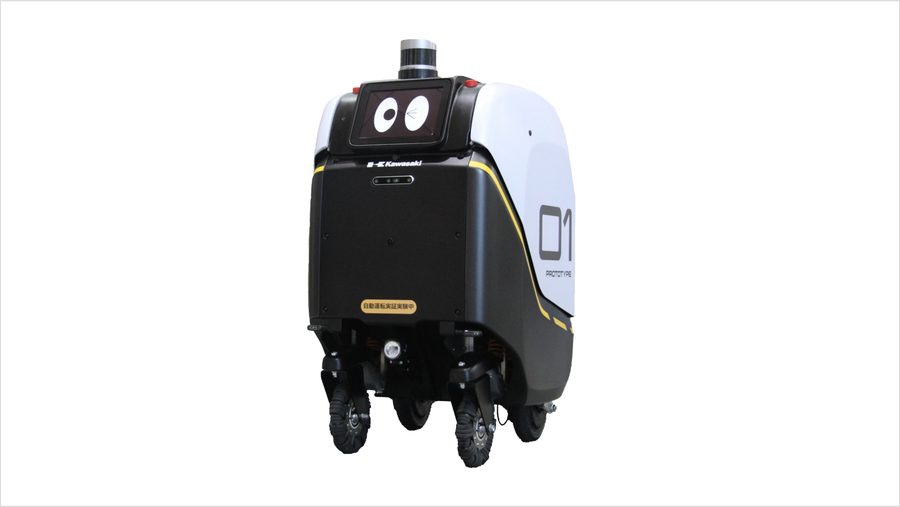
Features of the delivery robot
- Unmanned autonomous travel The robot is aware of the surrounding environment and can travel unmanned along the most appropriate route
- High payload capacity A high payload capacity realizes transportation with efficient costs
- Lightweight design The robot can be easily pushed to move and lifted up by human hand
- Road handling Excellent road-handling ability makes travel possible on uneven public roads and unpaved roads
- Remote communications The use of a monitor and a camera makes communications possible from a remote location
The delivery robot for the coordination in the last one mile to the delivery destination is a robot that combines Kawasaki robotics technology with the road-handling ability of a four-wheeled buggy. Technologies developed for motorcycles for size and weight reduction and a suspension that has high road-handling ability are combined with arm control and environmental recognition developed for robots. Our development includes not only deliveries, but also the handing over of cargo and light work tasks.
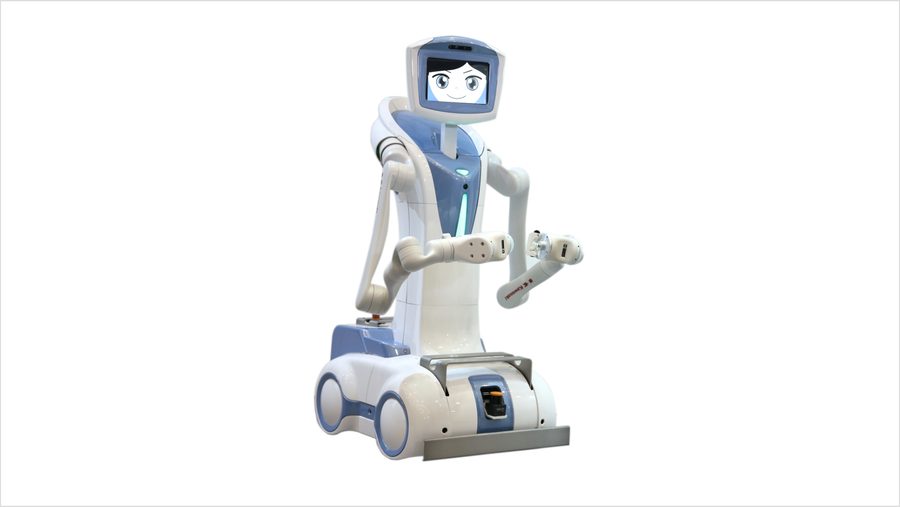
Initiatives for the realization of unmanned cargo transportation
Kawasaki has already succeeded in proof-of-concept (PoC) testing for these initiatives. We implement the sequence of actions in which a delivery robot loaded with cargo automatically boards the unmanned VTOL aircraft, the aircraft flies and lands autonomously with the delivery robot onboard, and then the delivery robot automatically disembarks and delivers the cargo.
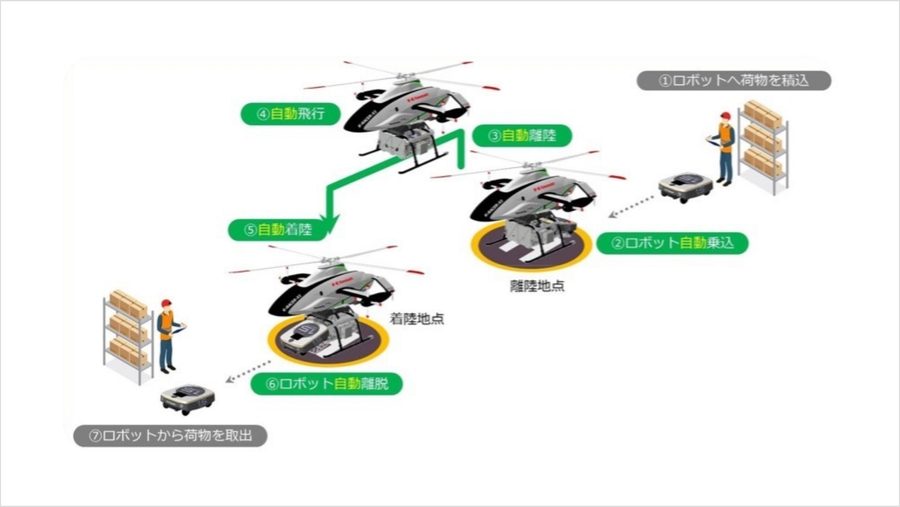
Near-Future Mobility also in use in medical workplaces
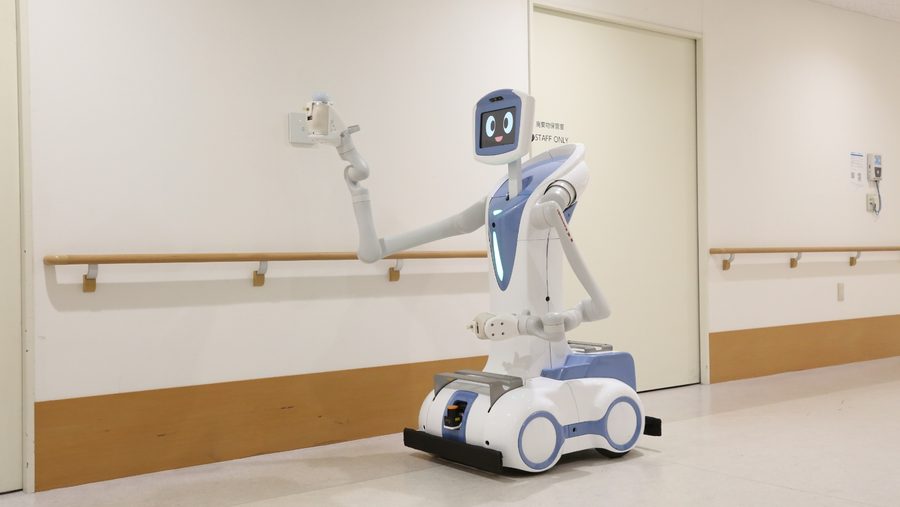
Kawasaki’s Near-Future Mobility is also starting to spread to various other scenarios. One of the initiatives for the smart hospital concept at the Fujita Health University Hospital (Toyoake City, Aichi Prefecture) is to link Kawasaki delivery robots with the infrastructure and IT systems inside the hospital. We have started demonstration testing aiming for utilization for the transportation of goods such as specimens and pharmaceuticals within the hospital, while securing safety and peace of mind.
We plan to gradually expand the scope of use in the future, such as to include guiding people around the hospital and performing shopping on a person’s behalf. We are looking to start actual operations within the hospital within fiscal 2022 and are steadily advancing proof-of-concept.
A robot that goes beyond the manufacturing industry – “Nyokkey”
Japan is in an era of population decline. Robots have so far only been used in limited areas such as the manufacturing industry. However, they are expected to be required in various other industries in the future. One of those industries is the service industry. In addition to chronic labor shortages, the coronavirus crisis has also increased the severity of the business environment for companies. Robots for the service industry. To achieve this, Kawasaki is developing the service robot Nyokkey.
RELATED CONTENTS
[Near-Future Mobility]A robot that goes beyond the manufacturing industry – “Nyokkey”